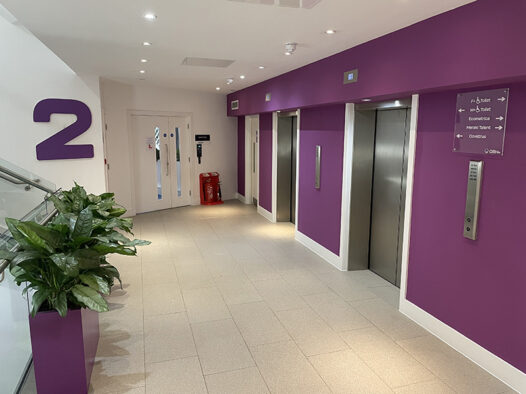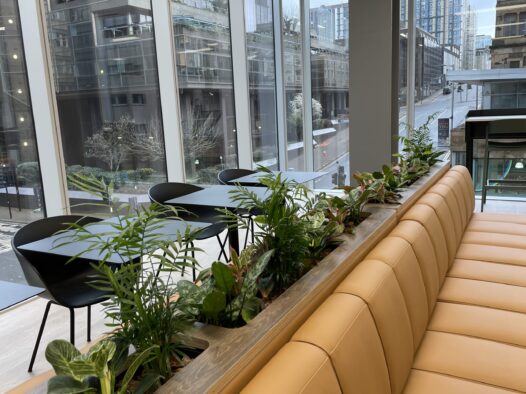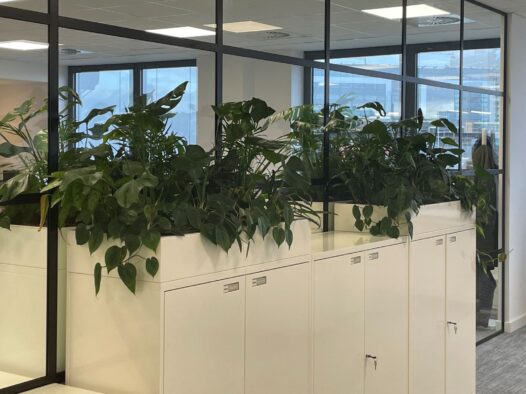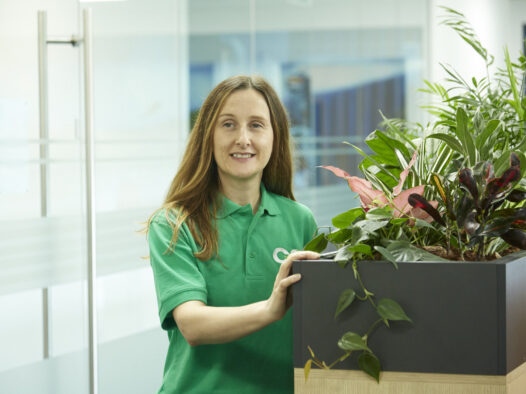Motability recently completed a biodiversity improvement area at their South Gyle offices, comprising a variety of initiatives.

The company behind the Motability car, powered wheelchair and scooter scheme are focused on minimising their impact on the environment and improving the planet throughout their operation.
By dedicating space to a biodiversity area, management aim to encourage a wider variety of species and higher numbers of wildlife to their urban car park. Whilst it’s hoped the initiative will also raise awareness amongst employees and visitors on how we can help to protect our planet.
Dorota Opara, facilities coordinator, said: “We already had beehives in the area but there was nothing around them.
“The area was so bare, and I wanted to bring in flowers for the bees which will improve the quality of our honey and to attract other animals and birds.”
By building the garden, over 20% of the site has been dedicated to increasing biodiversity.
Biodiversity Area
From dead hedges and a stumpery to bird and bat boxes and wildflower seed, the recent project incorporates a whole host of habitats for wildlife. So let’s tell you more about the charming features of the biodiversity garden.
Dead Hedges
Don’t be fooled by the name, these structures are teaming with wildlife. They provide a habitat for a huge variety of creatures and a food source for insects.
A dead hedge is an upright structure comprising external vertical wooden poles, between which dead twigs and branches are inserted. The intertwined material provides the perfect hidey hole for birds, where they can nest and forage.
The hedge itself is a work in progress. Throughout the year, it can be topped up with cuttings – keeping the area tidy while creating a natural habitat.
Two dead hedges were installed along the edge of the biodiversity improvement area at Motability to encourage a whole host of wildlife to the area.
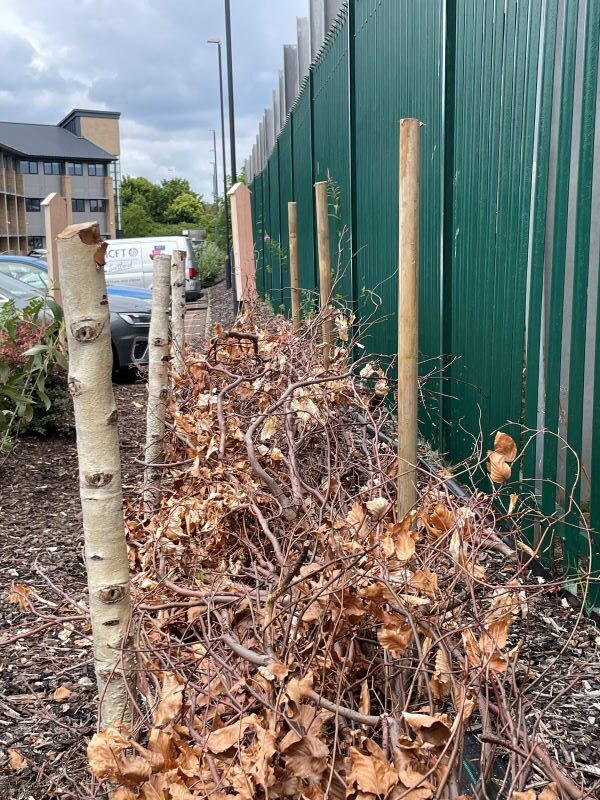

Stumpery
Popular in Victorian times, stumperies are making a comeback. A hybrid of a rockery and a log pile, tree stumps are firmly bedded in the ground then surrounded by plants to create a five-star insect shelter. Moss, lichen and fungi will grow round the logs, developing it into an even more luxurious wildlife home.
As well as a stumpery, rockeries and log piles also feature in the new Motability biodiversity garden.
Pond
Providing a water habitat is a magnet for an even broader range of wildlife including frogs, birds, newts and toads.
A range of pond plants and solar powered filter help to keep the pond oxygenated and prevents stagnation. Not only will this help maintain a good ecosystem it will stop the build-up of unsightly, horrible green sludge.
Flowering plants and wild flowers
To improve the quality and quantity of the honey yield from the sites two beehives, plants and wildflowers feature throughout the garden. The beehives, each containing over 60,000 bees, were rehoused for the duration of the project and when they returned seemed to be quite taken with their new surroundings.
Dorota said: “If you had seen the bees, how crazy they were going with all the work we have done, I haven’t seen anything like it before, they were all over the plants.
“It was brilliant.”
The honey harvested from the hives is being jarred and sold in the canteen for staff to enjoy.
Adding bee friendly plants to exterior landscaping schemes is a great way of supporting our declining bee populations. Bees are a fantastic pollinators and play a key role in food production and wildflower pollination.



Monitoring wildlife
To measure the biodiversity garden’s impact, the management team have plans to install cameras to monitor the wildlife living in and visiting the garden. It’s hoped the footage will generate interest from staff and encourage them to visit the space and spend time connecting with nature.
“GP Plantscape did such a brilliant job; Lex was so quick getting the proposal through…and once approved by our management team it was quick boom done, completed within a month. I really appreciate the brilliant job GP and wouldn’t hesitate work with again as they were able to understand my vision.”
Dorota opara, facilties coordinator







